At a time where cost-effectiveness is paramount, getting the most software development done on a limited budget is a top priority
Software development plays a pivotal role in the success of businesses across various industries. Whether you're a startup or an established organization, the need for software solutions to streamline processes, enhance customer experiences, or stay competitive is undeniable. However, not every company has the luxury of a bottomless budget for software development. In this post, we present strategies for maximizing your software development efforts while keeping costs in check.
- Define Clear Objectives
The first step in getting the most out of your software development budget is to establish clear objectives. What do you want the software to achieve? What specific problems should it address? Without a well-defined roadmap, you risk spending resources on unnecessary features or, worse, building a product that doesn't align with your business goals. Take the time to conduct thorough requirements analysis and ensure that all stakeholders are on the same page.
2. Embrace Remote Work Culture
In the wake of the global pandemic, remote work has become the new norm. It's not just a response to crises; it's a strategy that can help maintain IT efficiency without the need for extensive on-site infrastructure. By utilizing offshore and nearshore teams, you can access skilled professionals who work remotely, reducing overhead costs associated with maintaining physical offices and infrastructure.
3. Tap into Global Talent Pools
Offshore and nearshore resources provide access to a diverse and global talent pool. Instead of limiting your recruitment efforts to your local area, you can leverage skilled IT professionals from regions where labor costs are lower. This not only helps reduce expenses but also ensures that you have access to specialized expertise tailored to your specific needs.
4. Consider Open Source Solutions
Leveraging open-source software can be a cost-effective way to accelerate development. Many high-quality libraries, frameworks, and tools are available for free, and they can significantly reduce development time and expenses. By building upon existing open-source resources, your team can focus on customizing and fine-tuning the software to meet your specific needs, rather than reinventing the wheel.
5. Outsource
Hiring and maintaining a full-time, in-house software development team can be expensive, especially for businesses with limited budgets due to economic conditions or other factors. Consider outsourcing for specific project phases or tasks. This approach can provide cost savings by avoiding the overhead associated with full-time employees while tapping into specialized expertise for particular project needs, when you need it. Be sure to vet potential partners carefully to ensure they have a proven track record of delivering quality work.
6. Embrace Agile Methodologies
Agile methodologies, such as Scrum or Kanban, emphasize flexibility, collaboration, and iterative development. These approaches can help you make the most of your software development budget by allowing you to adapt to changing requirements, gather feedback early and often, and continuously deliver value to your users. Agile teams work in short cycles or sprints, which can lead to faster development and reduced risk of costly delays.
7. Leverage Cloud Services
Cloud computing platforms offer scalable and cost-effective infrastructure for hosting and managing software applications. Instead of investing in expensive on-premises servers and infrastructure, consider utilizing cloud services like Amazon Web Services (AWS), Microsoft Azure, or Google Cloud. These platforms provide a pay-as-you-go model, allowing you to scale resources up or down based on your needs, which can result in significant cost savings.
8. Optimize Cost Structures
Offshore and nearshore resources often operate in countries with favorable cost structures. Labor costs, in particular, tend to be lower, allowing you to save significantly on salaries and benefits compared to hiring locally. This financial flexibility enables you to allocate resources where they are needed most, whether it's for development, maintenance, or IT support.
Maintaining IT efficiency on a tight budget is a process that requires strategic thinking and resource optimization. Offshore and nearshore resources offer a compelling solution to this challenge by providing access to cost-effective talent, allowing for flexible work arrangements, and promoting efficiency-enhancing methodologies like agile development and automation. By incorporating these strategies and embracing the capabilities of offshore and nearshore teams, your organization can thrive even in budget-constrained environments while staying at the forefront of IT innovation.





